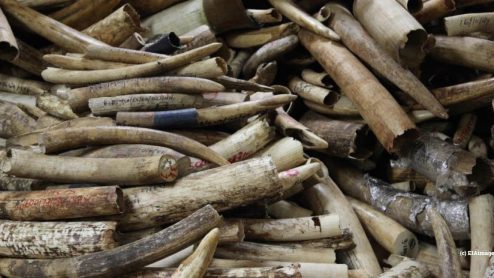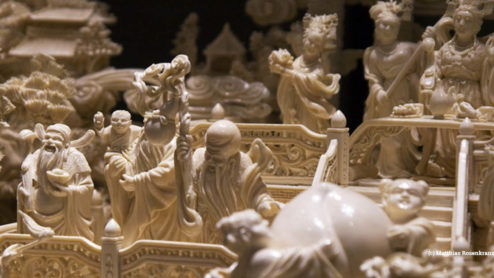World Elephant Day 2023 – a chance to reflect on the cultural value of this magnificent species
As we mark World Elephant Day 2023 (12 August), elephant populations in Africa and Asia face a variety of ongoing threats, primarily from organised transnational criminal syndicates involved in the ivory trade, but also as a result of habitat loss and human-elephant conflict over diminishing resources.
Against this backdrop, it’s all too easy to forget that elephants are widely revered around the world for their cultural value, so to mark this year’s national day we asked our Wildlife campaigners and a close partner from the Africa Nature Investors Foundation to choose an elephant range country linked to their backgrounds and to reflect on their personal attachments and passions for these magnificent creatures.
Namibia
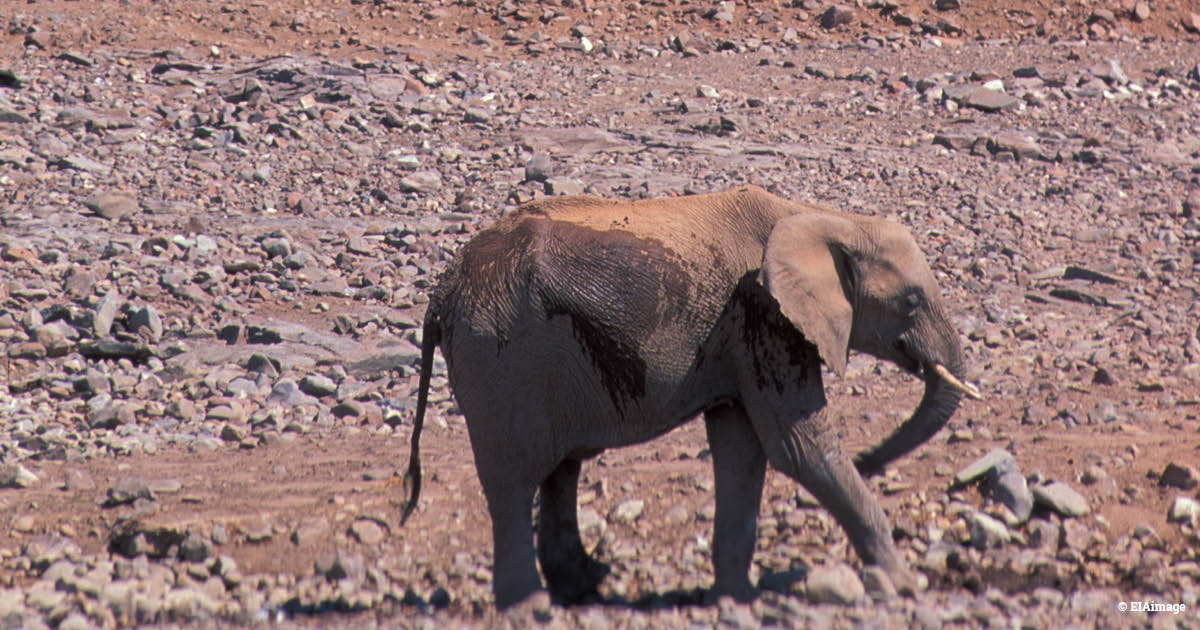
 Mary Rice, Executive Director
Mary Rice, Executive Director
Just over two decades ago, I had the privilege of spending three years in a remote corner of north-west Namibia, a desert landscape dominated by extreme temperatures and less than 150mm of rainfall each year. Known as one of the last great wildernesses, the Kunene is a harsh and arid terrain. It is also home to a host of animals, including a tiny population of elephants, all of which have adapted to live in this extreme environment.
The elephants, especially, play a vital role in this landscape. Ranging largely within the dry riverbeds of an ephemeral river system, they dig what are known locally as gorras .
Exploiting the presence of shallow groundwater forced to the surface by impermeable bedrock, gorras are essentially excavated clean water seeps or wells. The art of sourcing this water is of immeasurable importance to the elephant of this arid realm, as they depend on a network of scattered gorras and springs to sustain them for most of the year. Unable to dig for themselves, a whole range of other mammals, birds and insects also benefit from the efforts of the elephant.
Early travellers to the sub-region found these diggings a useful water source and even today the nomadic pastoralists of the region will make use of them.
Living in the company of these elusive giants which have made the ephemeral river system and its floodplain their home is a memory I treasure. Their intrinsic value to this dry and remote wilderness is self-evident and, in the words of author and naturalist Peter Matthiessen, ”… the prosperity of many other creatures may depend on them” (African Silences).
South Africa
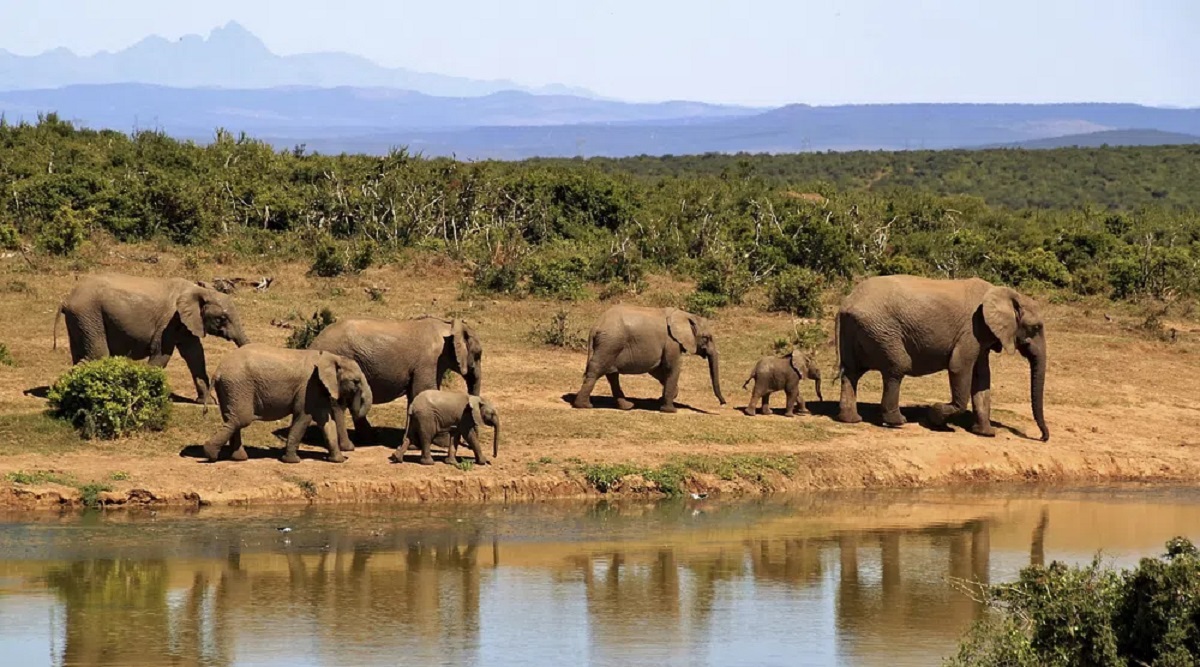
 Lindsey Smith, Senior Wildlife Campaigner
Lindsey Smith, Senior Wildlife Campaigner
Once ranging across all of what is now South Africa, elephants commonly feature in cultural practices and folklore. They are a revered totem of several clans in the Nguni ethnic group comprising the Zulu, Xhosa, Ndebele and Swazi peoples. Clans protect their totems from harm and treasure them for the good they bring to their clan. The Zulu, Tswana and Tsonga names for the elephant all mean ‘the forceful /unstoppable one’.
Elephants are also strongly associated with the indlhovu group of Zulu paramount chiefs. They take their name from the folktale of a young girl who finds a kind, eloquent elephant and marries him; their children are the ancestors of these powerful chiefs. The great Zulu chief Shaka kaSenzangakhona was often called ‘the great elephant’.
Today, elephants are still revered for their strength and wisdom; the South African coat of arms includes elephant tusks to represent wisdom, strength, moderation, and eternity.
Many South African companies and products feature elephants in their logos, such as Amarula, a cream liqueur infused with marula fruit. The fruit of the marula tree is prized by elephants and myths abound of elephants becoming intoxicated from foraging the fermenting fruits. Elephants travel significant distances and congregate around marula trees to gorge on the fruit and any dislodged fruit is consumed by other species, such as baboons, impala, kudu, warthogs and many local communities.
And, of course, who can forget Kipling’s tale of how the elephant got his trunk on the banks of the great grey-green, greasy Limpopo river?!
Vietnam

 Linh Nguyen, Wildlife Campaigner
Linh Nguyen, Wildlife Campaigner
In Vietnam, the elephant is a significant cultural and religious symbol.
Historically, there were many examples of elephants in combat, from the revolution led by the well-known Trưng sisters in AD 40, the Lady Triệu in AD 43 to the last time that the elephant-riding soldiers were used in 1904 during the reign of King Thành Thái under the Nguyễn Dynasty.
In the Đông Sơn culture – the Bronze Age culture of Vietnam dating back more than 2,000 years ago in the Red River Delta – representations of elephants were used to adorn objects, symbolizing its close-knit relationship to the life of the ancient Vietnamese. These include the bronze bell with an elephant statue, which stands between the two ears curved like the two tusks displayed at the National Museum of History in Hanoi.
Meanwhile, elephants are the embodiment of power and wealth to the ethnic minority groups living in the Central Highlands. These groups, such as the Mnông in Đắk Lắk province, consider elephants to be valuable members of the village community and perform a ceremony to pray for their continued good health every year.
The Central Highlands region is also home to the majority of wild elephants in Vietnam, which are estimated to number about 100 individuals, a decline of more than 90 per cent since 1990s.
These remaining survivors, which are classified as critically endangered in the Vietnam Red Book of rare and endangered species, are facing extreme threats, including conflict with humans and loss of habitat.
China

(c) Yunnan Forest Fire Brigade
 Ceres Kam, Wildlife Campaigner
Ceres Kam, Wildlife Campaigner
Growing up in China, my first encounter with an elephant was at the city zoo. I dare say that this would be the first and only type of interaction for the vast majority of Chinese people. For current generations of Chinese, an elephant is an exotic giant, seen only in story books, on TV and at zoos. It’s no wonder that the trek of a herd of Asian elephants through towns and cities in southern China in 2020-21 sparked a frenzy of interest in the country.
Elephants were once a much more familiar sight to people in China. Historically, the elephant was tamed as early as 2200 BC to help with ploughing rice fields, to charge against the enemy in wars and participate in ceremonial parades. Its significance is reflected in Chinese chess, where the elephant is one of the pieces that guards the General, moving in a pattern diagonally across the character for rice field (田).
The cultural importance of the elephant also contributed to its ivory becoming a status symbol and its populations hunted to near extinction. To strengthen conservation and tackle illegal trade, China took the landmark step of implementing an ivory ban in 2018.
With strong and sustained public education and law enforcement efforts, new generations of Chinese can grow up seeing elephants no longer as a commodity, but instead a species to be treasured for its role in nature.
Sri Lanka

 Rachel Mackenna, Senior Wildlife Campaigner
Rachel Mackenna, Senior Wildlife Campaigner
Growing up, I’d often travel with my parents to Sri Lanka to visit my mum’s family and I still go as regularly as possible. Each visit involves at least one trip to the many biodiverse national parks and cultural and heritage sites across the island, which without fail provide the perfect backdrop to see my favourite animal – the Sri Lankan elephant.
The relationship between humans and elephants in Sri Lanka goes back thousands of years and it has a revered symbolic, cultural and economic value in the country.
In the past, they were often used as a means of transport, defence and offence and today elephants and their imagery continue to be used for religious processions and represent one of the main reasons why tourists flock to Sri Lanka.

Philip Rekret
Philip Rekret, Wildlife Project Officer
During my time living in rural Sri Lanka, I witnessed the island’s rapid urbanisation and the expansion of agriculture increasingly encroaching upon and fragmenting the natural habitats of elephants.
Incidents of human elephant conflict and crop raids have become increasingly more frequent, resulting in economic hardships for farmers and triggering retaliatory actions that endanger both human and elephant lives.
Climate change-induced shifts in food availability and migration patterns have further disrupted the delicate balance, forcing elephants to venture into human settlements in search of sustenance.
Addressing these issues requires a comprehensive approach that combines robust habitat protection, community engagement, advanced technology for early warning systems, further research into alternative interventions such as chili pepper fences and sustainable land-use planning to foster coexistence between humans and elephants while safeguarding the well-being of both.
Nigeria
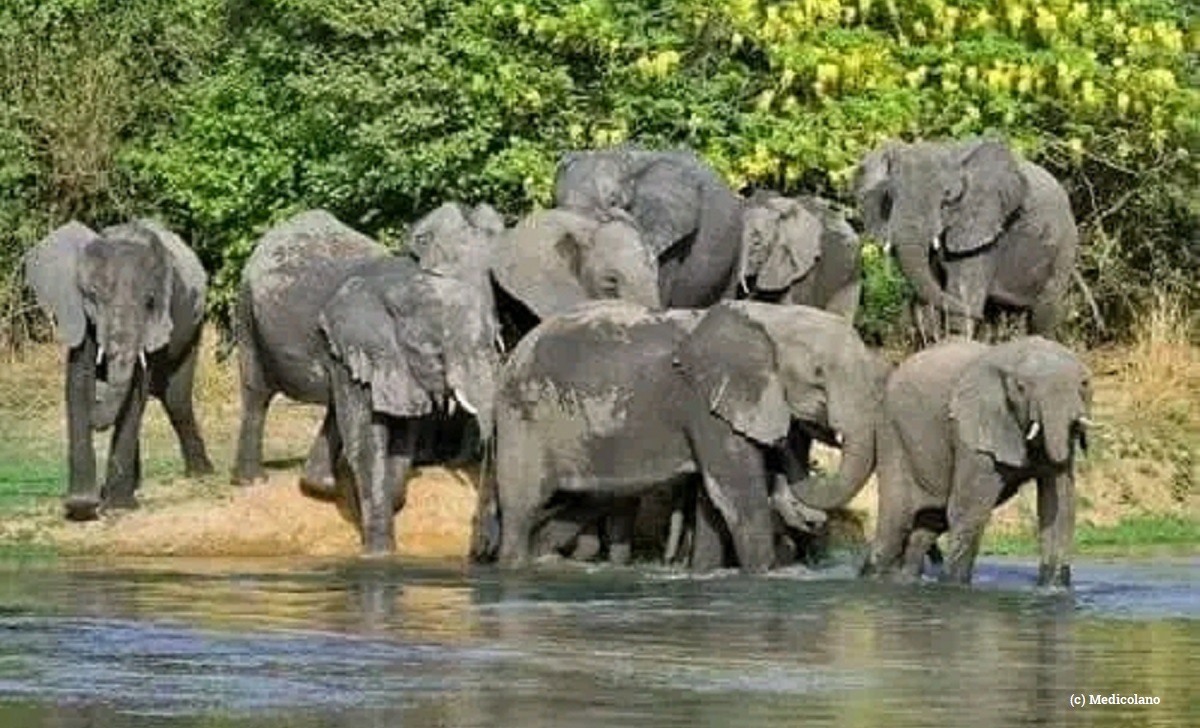
 Wilson Ogoke, Wildlife Policy Coordinator, Africa Nature Investors Foundation
Wilson Ogoke, Wildlife Policy Coordinator, Africa Nature Investors Foundation
As someone born in southern Nigeria after the local extinction of elephants in all but a few locations in the region, my first experience of those mighty mammals came from Igbo folklore, where they personify authority, strength, royalty, and resilience.
Oddly, while elephants were visible in our folklore as symbols of authority and royalty, I never once encountered them in south-eastern Nigeria – not even in my travels to Aba, Nigeria’s Enyimba city (“the people’s elephant city”), with a similarly named football club.
Looking back in the mists of time, Christopher Okigbo’s poem Hurrah for Thunder and the allegorical parallels it drew between the killing of elephants and the truncation of democracy was my first alert to the possibility of the total disappearance of African elephants and the dangers that would portend for me and my society. I later learned that beyond folklore, poetry and political symbolisms, the link between the survival of keystone species such as elephants and societal well-being is well established in science.
Therefore, as the world marks another World Elephant Day, I am happy that Nigeria has started to take up the gauntlet against the organised crime networks using it as a conduit to traffic in elephant ivory and decimate an important pillar of cultural identity and social wellbeing.
I hope that Nigeria will continue to improve its efforts to combat ivory trafficking as a way of assuring the survival of African elephants and their immeasurable contribution to the identity and wellbeing of peoples and cultures across the African continent.

